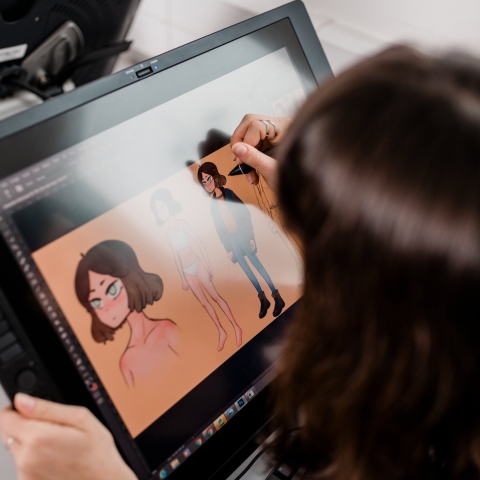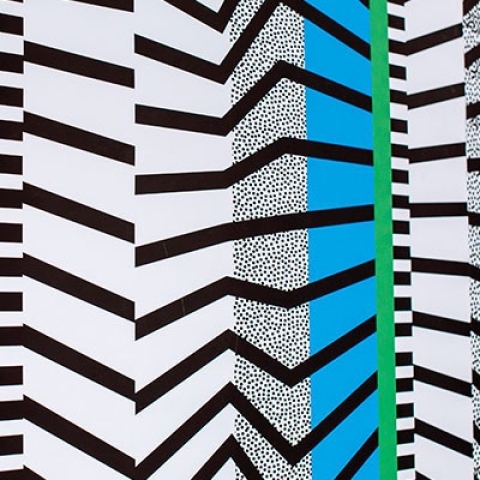
Sidebar navigation

5 top tips for students
How to ace portfolios and interviews
When it comes to applying for creative courses, grades are not the sole determining factor. Portfolios, interviews, and personal statements play a crucial role in your student's application.
These elements allow students to showcase their artistic style, creative abilities, discuss their influences, and demonstrate their passion for their chosen creative subject. Here are 5 tips to support your students stand out in their application for a creative course.
1. Research the course
Encourage your students to thoroughly research the specific course they are applying for. While they don't need to recite every module, it's important for them to grasp the differences that may exist across universities.
In their portfolio and interview, they should demonstrate an understanding of the course and subject area. One of the best ways of doing this is by going to Open Days or Taster Days, carefully reading portfolio guidance, and staying up to date on current affairs around their chosen subject area.
2. Help us learn about your students
Alongside demonstrating an understanding of the course, universities also want to see what inspires your students. Each student is unique, so it's essential that they showcase their personality and creative identity.
Encourage them to include a diverse range of things that describe who they are – both as a person and as a creative individual. As creatives, they pour a part of themselves into their work, so it's important that this personal touch shines through.
And if they need a hand writing about this, our handy Personal Statement Hub is a great place to start.
Creative courses at Portsmouth

Computer games, animation, and digital technologies courses
Keep up with the latest technology and techniques in computer game design & animation by taking one of our degrees. Take a placement with Sega, ILM and more.

Drama, music, and performing arts
Take to the stage, hone your talents, and prepare for a career in drama, music or the performing arts with one of our degree courses at the University. Find out more.

Fashion, photography, graphic arts and design courses
Whether your medium is photography, graphic design, fashion, your creativity is in demand. Develop your abilities to a professional level on one of our degree courses.

Undergraduate Open Days
Thinking about joining us as an undergrad? Book your spot at one of our upcoming Open Days.

Your Personal Statement Hub
Plan, write, tweak. If you want to show your chosen university why you're the perfect candidate for a course, our Hub's got you covered.
3. Show us the creative process
In their portfolio, students can shine by showcasing their creative journey, starting from initial research and progressing through developmental work to the final piece.
It's important for them to demonstrate their ability to critically review and analyse their work, reflecting on whether they would make the same choices again or what they would change. This balance of creativity and reflection will not only impress admissions teams, but also foster their growth throughout their studies.
4. Keep it succinct
It's essential to strike a balance in the portfolio. While showcasing a variety of work is valued, it's equally important to demonstrate the ability to edit and piece together the portfolio effectively. Encourage your students not to include everything they've ever done, but also caution against paring it back to nothing.
They should aim to tailor their portfolio to the specific course they're applying for, selecting pieces that align with the course's focus and requirements. A well-curated and tailored portfolio will make a strong impression on admissions teams.

Portsmouth is home to Centre for Creative and Immersive Extended Reality (CCIXR) – the UK’s first integrated facility that brings together a full suite of the latest XR technologies under 1 roof.
5. Choose a suitable format
They should opt for a format that aligns with the creative area they’re working in. Tied into this are some practical considerations too – will a bulky folder hinder them in transit? Would a digital portfolio be easier to share? This should all be factored into how they might design their portfolio.
Bonus tip: Get interview-ready
On our creative courses, interviews can include workshops and auditions. Your students will get instructions or guidelines on how they'll be assessed, but they will need to know exactly what's in store. So best to focus on preparing for what they know, by revisiting information about the course, their personal statement and any other interesting aspects of their subject area.
Sometimes, universities might ask them to do this virtually. So it's a good idea to make sure the tech works pre-interview, to check things like their microphone, camera and screen sharing abilities – and to potentially have shareable examples of their portfolio saved on their computer.





